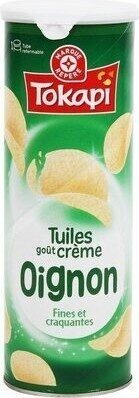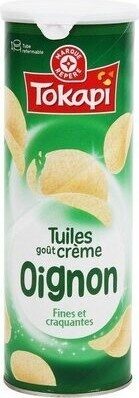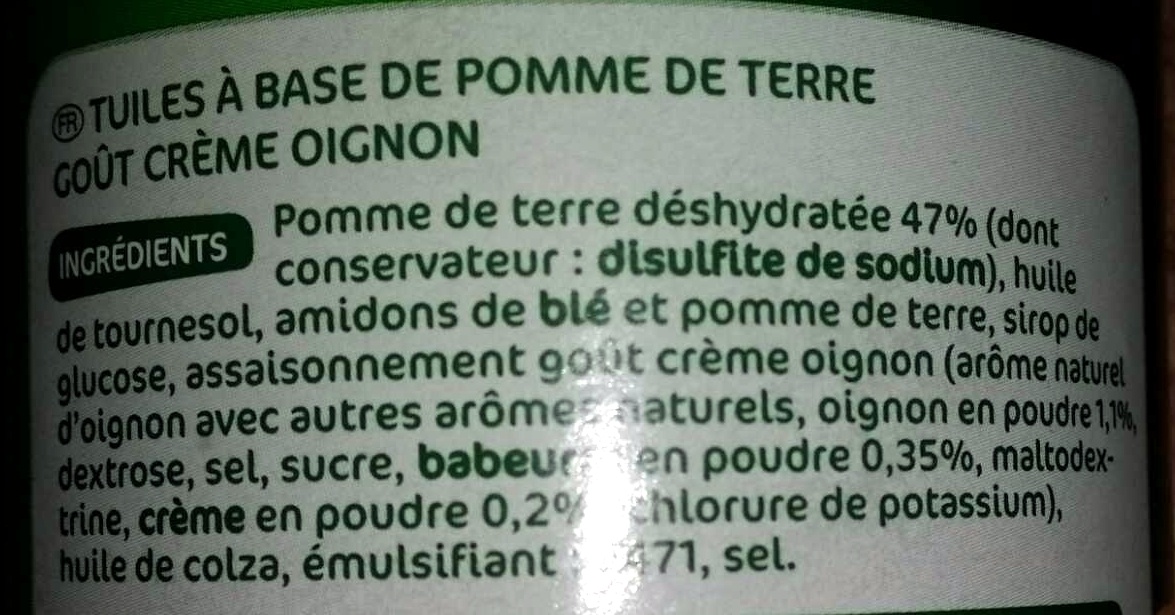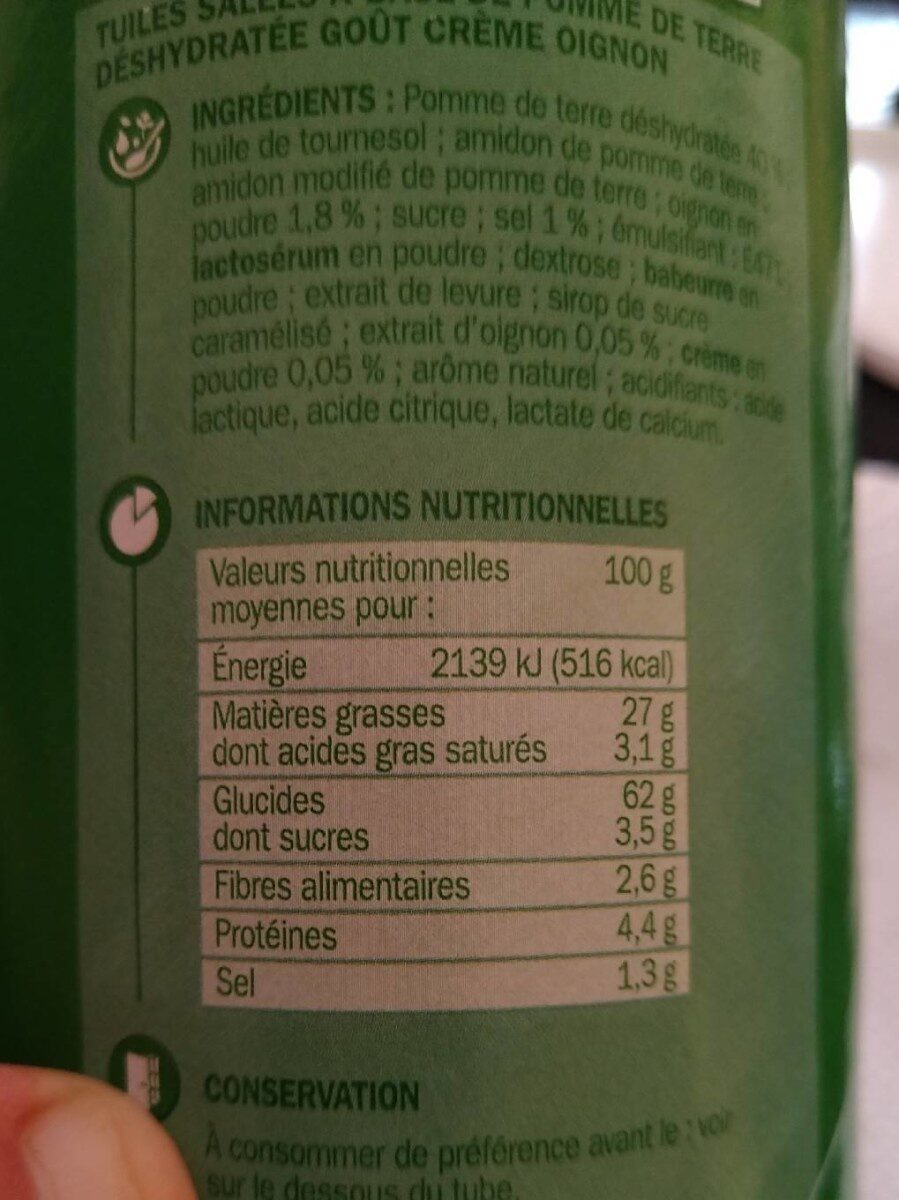Tuile goût crème oignons - Tokapi - 170 g
This product page is not complete. You can help to complete it by editing it and adding more data from the photos we have, or by taking more photos using the app for Android or iPhone/iPad. Thank you!
×
Some of the data for this product has been provided directly by the manufacturer Scamark.
Barcode: 3564700542774 (EAN / EAN-13)
Common name: Tuiles à Base de pomme de terre goût crème oignon
Quantity: 170 g
Brands: Tokapi, Marque Repère
Categories: Snacks, Salty snacks, Appetizers, Chips and fries, Crisps, Salty snacks made from potato
Stores: Leclerc
Countries where sold: France
Matching with your preferences
Environment
Carbon footprint
Packaging
Transportation
Report a problem
Data sources
Product added on by nash
Last edit of product page on by kiliweb.
Product page also edited by beniben, blononor, date-limite-app, ecoscore-impact-estimator, manu1400, morganesh, openfoodfacts-contributors, org-scamark, packbot, quechoisir, scamark, segundo, shaolan, tacite, tacite-mass-editor, yuka.HI5cI_W7O94LF8L9_JwI9SeXF8j5A-9VNS4Iog, yuka.LrRNZMynHJ0MFfbY-ok58mOUJPvcOdtUMiQAog, yuka.U1lJTVNyZ01pOGc0d01Wdi9pN1FwOEI2d0krVUJrSzhjK2M3SVE9PQ, yuka.UUpBNlRyWW1uTmNUa01jd3pEUFJvL2wybjdDWlYyR2VkOUlwSVE9PQ, yuka.V2Y4REM1OGtpZWdqdThJRjR6cm40NEpmeVpIMkExL3VPZklvSVE9PQ, yuka.VkxFYVQ1OE5nOVF6bzlvMDJ6bjMrUEY3NXFQMkRGS09MdFVlSVE9PQ, yuka.VnZFZ0M0Y2JyOWNhdmNKajNSVHM0ZjVjenBhU2NqbW1lN3RQSUE9PQ, yuka.WDVrWkF2OVp1ZHMyaWRrRnBUWHh4ZUpIMjUrTFpXaUxkYzRKSVE9PQ, yuka.WFlNeEc0VXZtTmtubU5vUHJ4ZU80ZFJMNFpxZ1UyMmFKTlV4SUE9PQ, yuka.WUlFT05KbForOFF1dzhKdndCNzQ1UDk4ellPSlFUaVJHYzBSSWc9PQ, yuka.ZnZGUkVMbzRxK2RieDhJNHpEN04vT043OTRhTWNrS05GTUFqSVE9PQ, yuka.sY2b0xO6T85zoF3NwEKvlk9Bf_zm_CrvJyLlokaK4v2hCpznf4BQ_rTHI6g, yuka.sY2b0xO6T85zoF3NwEKvlldJC_zepyDGCzrtknCx3Ynecqyxb-siw5XYKag.











